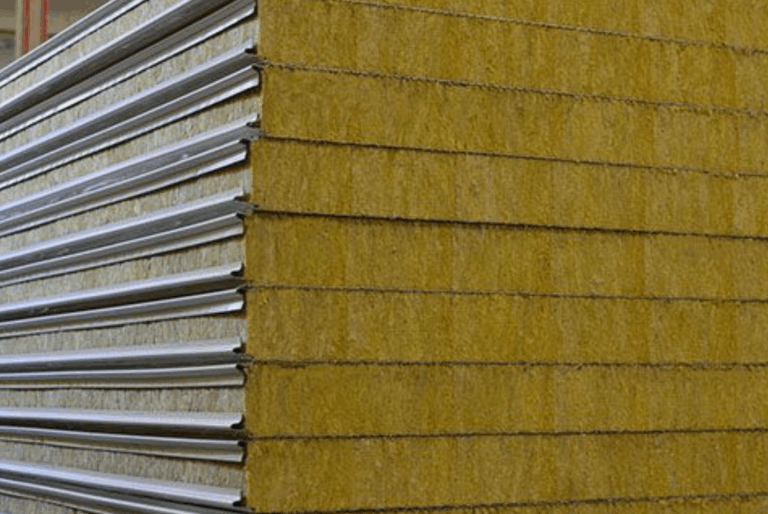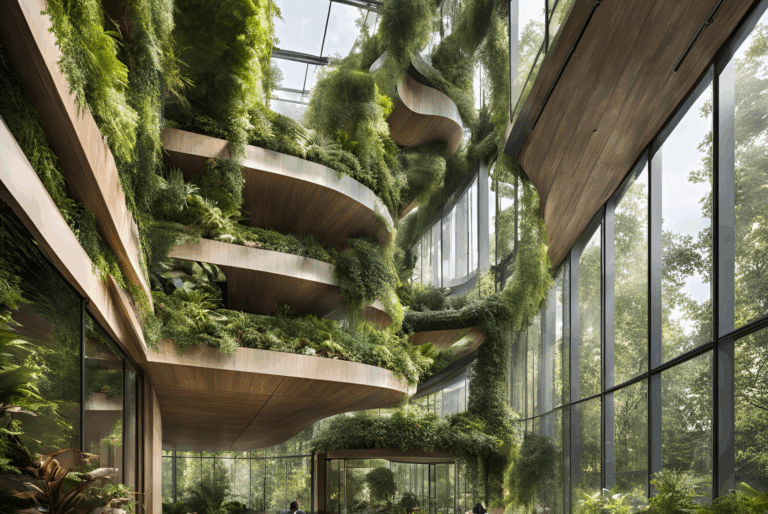Wall paneling has surfaced as a resourceful and efficient solution for residential and commercial projects in the construction and interior design industry. Wall paneling offers a wide range of options to match your needs, even if you are looking to enhance the aesthetics of your interior rooms or improve the durability of your building’s exterior. Here you will find the benefits and applications of both wall paneling and exterior wall panels. This information will help you make the right decisions for your next construction project.
An overview of interior wall paneling and exterior wall panels
Exterior wall panels and interior wall paneling are two different but complementary solutions in moder construction. Interior wall paneling aims to enhance the visual appearance and functionality of indoor spaces, whilst exterior wall panels protect the building from environmental aspects and improve its overall performance.
On the one hand, exterior wall panels serve as the building’s first line of defense against temperature fluctuations, weather and other environmental conditions. These panels not only protect the structure but also provide its energy efficiency and overall appeal.
On the other hand, interior wall paneling has progressed from its traditional wood-paneled roots. Nowadays, it encircles a wide variety of materials, styles and finishes that can transform any space into an amazing showcase of design. Interior wall paneling offers endless possibilities for customization, from sleek, modern looks to rustic, textured surfaces.
Key benefits of interior wall paneling
Are you interested in the benefits of interior wall paneling? Here are some of them:
Enhancing interior aesthetics
One of the first benefits of interior wall paneling is the ability it has to dramatically transform the look and feel of a room. It can add texture, depth and character to the wall, creating a focal point or complementing existing decoration. With a lot of variety of materials, colors and patterns, interior wall paneling is able to suit any design style, from minimalist modern to ornate traditional.
In addition, wall paneling can be used to create visual interest in large, open spaces or to make small rooms appear bigger. You can influence the perception of the size of a room and its proportions by choosing the right panel design and layout.
Improving insulation and energy efficiency
But interior wall paneling is not only about aesthetics, it can also contribute to a building’s insulation and energy efficiency. In particular, insulated internal wall panels offer excellent thermal properties that help maintain comfortable indoor temperatures at all times of the year. These panels can lower heating and cooling costs by reducing heat transfer through walls. This makes them an environmentally friendly and cost-effective choice for new constructions and for renovations.
Moreover, some types of wall panels are able to improve acoustic insulations, reducing noise transmission between rooms or from outside. This attribute is very valuable in multi-unit residential buildings, offices or any space where sound control is important.
Exploring different types of interior wall panels
Interior wall paneling can offer a diverse range of options to suit different needs and preferences. This is what it can include:
- Wood panels: to create a warm, natural look or sleek, modern aesthetic, classic and versatile, wood panels are the ones to use.
- MDF (Medium-Density Fiberboard) panels: a popular choice for both residential and commercial spaces are these engineered wood panels. They are cost-effective and come in various designs.
- PVC panels: ideal for bathrooms, kitchens, and other moisture-prone areas but they are also lightweight, water-resistant, and easy to clean.
- Fabric panels: perfect for home theaters, offices, or any space requiring sound absorption, these panels combine aesthetics with acoustic benefits.
- Stone and brick veneer panels: they offer the look of natural stone or brick without the weight and installation complexity of the real materials.
Popular materials for wall panels interior
The choice of material can significantly impact both the look and performance of your space when it comes to wall panels interior. Some popular materials include:
- Hardwoods: Oak, maple, and walnut are prized for their durability and natural beauty.
- Softwoods: Pine and cedar offer a more rustic look and are often more budget-friendly.
- Engineered woods: MDF and plywood provide versatility and stability at a lower cost.
- Metals: Aluminum, copper, and stainless steel panels can create a modern, industrial look.
- Composites: These panels combine different materials to offer unique aesthetics and performance characteristics.
Why choose exterior wall panels?
Due to their numerous benefits, exterior wall panels have become increasingly popular in modern construction. Here’s why:
- Improved energy efficiency: they can help reduce heat loss and improve the building’s overall energy performance as many exterior panels come with built-in insulation.
- Quick and easy installation: exterior wall panels can be installed more, reducing construction time and labor costs.
- Versatile design options: exterior panels can enhance the visual appeal of any building with a great variety of colors, textures, and finishes available.
- Low maintenance: Many exterior panel systems require minimal upkeep, saving time and money in the long run.
Weather resistance and durability
One of the most significant advantages of exterior wall panels is their superior weather resistance and durability. High-quality exterior panels are designed to withstand harsh environmental conditions, including:
- Extreme temperatures
- Heavy rainfall and moisture
- UV radiation
- Wind and impact resistance
When you choose the right exterior wall panels, you can ensure that your building remains protected and maintains its appearance for years and years, reducing the need for frequent repairs or replacements.
In conclusion, interior wall paneling and exterior wall panels both offer valuable solutions for modern construction projects. Knowing the benefits and characteristics, you can make informed decisions that will enhance the aesthetics, efficiency, and durability of your building. Wall paneling solutions provide the versatility and performance needed to maximize the potential of your construction project if what you are looking for is to create stunning interiors or protect your structure from the elements.





